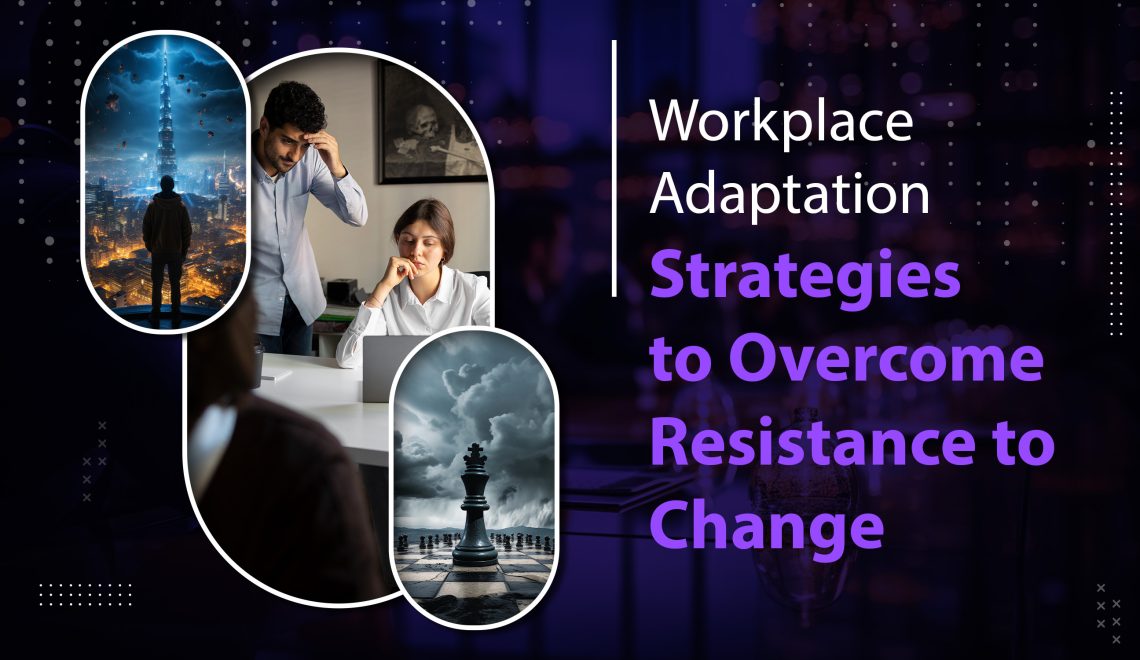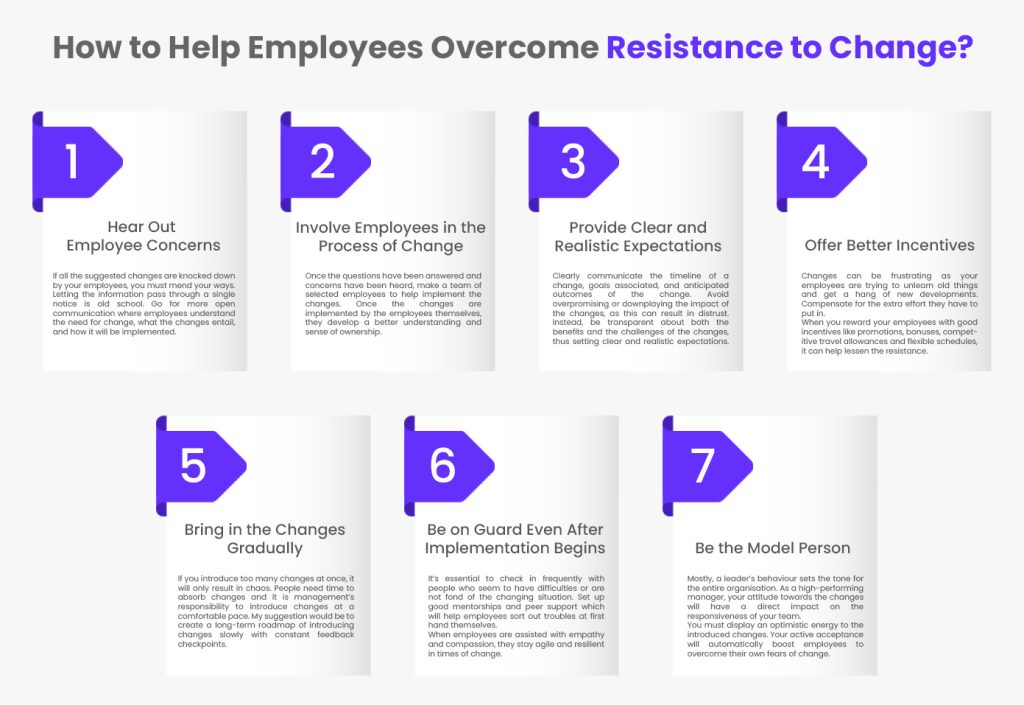
It’s no secret, “Changes are the only constant!” They occur frequently, whether we want it or not. Changing teams or departments of employees also institutes some change. And with change, it is human nature to resist. Anything that deflects the normal functioning organisation faces resistance. In this blog, we discuss practical strategies to overcome resistance to change and ensure that employees feel comfortable with new developments.
How to Help Employees Overcome Resistance to Change?
Resistance has a significant impact on the success of change.
Most employees resist change during digital transformations, hindering the organisation’s growth and ability to adapt to evolving market dynamics.
If you’re navigating through transitions, you can overcome resistance to change and achieve desired outcomes with these strategies:

Hear Out Employee Concerns
If all the suggested changes are knocked down by your employees, you must mend your ways. Letting the information pass through a single notice is old school. Go for more open communication where employees understand the need for change, what the changes entail, and how it will be implemented.
People are not afraid of changes; they are afraid of the uncertainty associated with the change. With direct communication, you can help them leave behind their fears and uncertainties.
Sudden workplace changes often bring lots of questions which are mostly left unanswered and employees are just expected to accept everything. That’s where the problem arises! Before finalising a new work policy, convey it well to the employees. And listen to their thoughts and questions, which can increase their buy-in to the changes.
Involve Employees in the Process of Change
Once the questions have been answered and concerns have been heard, make a team of selected employees to help implement the changes. Once the changes are implemented by the employees themselves, they develop a better understanding and sense of ownership.
Soliciting ideas and feedback from employees makes them feel valued and recognised like other stakeholders rather than passive recipients of change. They also feel satisfied having contributed towards a revolution in the organisation. The earlier the employees get involved in the change process, the easier it is to achieve buy-in and avoid any kind of resistance to change.
Provide Clear and Realistic Expectations
Clearly communicate the timeline of a change, goals associated, and anticipated outcomes of the change. Avoid overpromising or downplaying the impact of the changes, as this can result in distrust. Instead, be transparent about both the benefits and the challenges of the changes, thus setting clear and realistic expectations.
Offer Better Incentives
Changes can be frustrating as your employees are trying to unlearn old things and get a hang of new developments. Compensate for the extra effort they have to put in.
When you reward your employees with good incentives like promotions, bonuses, competitive travel allowances and flexible schedules, it can help lessen the resistance. The smallest of gestures help them embrace changes and actively participate in the transition process.
Bring in the Changes Gradually
If you introduce too many changes at once, it will only result in chaos. People need time to absorb changes and it is management’s responsibility to introduce changes at a comfortable pace. My suggestion would be to create a long-term roadmap of introducing changes slowly with constant feedback checkpoints.
Be on Guard Even After Implementation Begins
It’s essential to check in frequently with people who seem to have difficulties or are not fond of the changing situation. Set up good mentorships and peer support which will help employees sort out troubles at first hand themselves.
When employees are assisted with empathy and compassion, they stay agile and resilient in times of change.
Be the Model Person
Often, a leader’s behaviour sets the tone for the entire organisation. As a high-performing manager, your attitude towards the changes will have a direct impact on the responsiveness of your team.
We must display an optimistic energy to the introduced changes. Our active acceptance does a lot in boosting employees confidence to overcome their own fears of change.
Summary
Often changes are feared because of strong rumors, negative publicity and wrong interpretations getting out to the public. It’s better to prepare employees for workplace transformations beforehand.
Empathy is the greatest tool at a manager’s disposal to make employees feel more comfortable with new changes and eliminate their resistance successfully. Just as the business needs to adapt to growing changes, employees are required to adapt to organisational changes for the business to thrive.
Follow me on LinkedIn
Frequently Asked Questions
1. How to overcome resistance to change in an organisation?
Involve employees in the change process right from the beginning to minimise their resistance to change. Seeking their suggestions fosters a sense of ownership of the proposed change. Also, demonstrate your commitment to change by embracing it yourself. When people see their managers actively supporting the changes, they are more likely to follow suit.
2. Why is change necessary in the workplace?
Change is essential for the growth and adaptability of an organisation. It helps a business stay competitive by improving its efficiency in meeting evolving customer needs.
3. Why do people resist change in the workplace?
Resistance to change can stem from fear of the unknown, loss of control, or simply feeling comfortable with the existing state of affairs. When past experiences of change may have been negative, employees become reluctant to embrace new initiatives.
4. How can you help your team members adjust to changes?
Encourage open communication and provide support to your team members. Acknowledge their concerns and help them see the benefits of the change. Offer training and resources to facilitate their transition.



